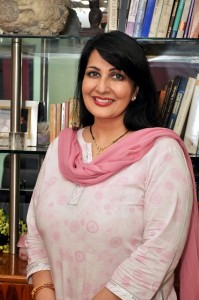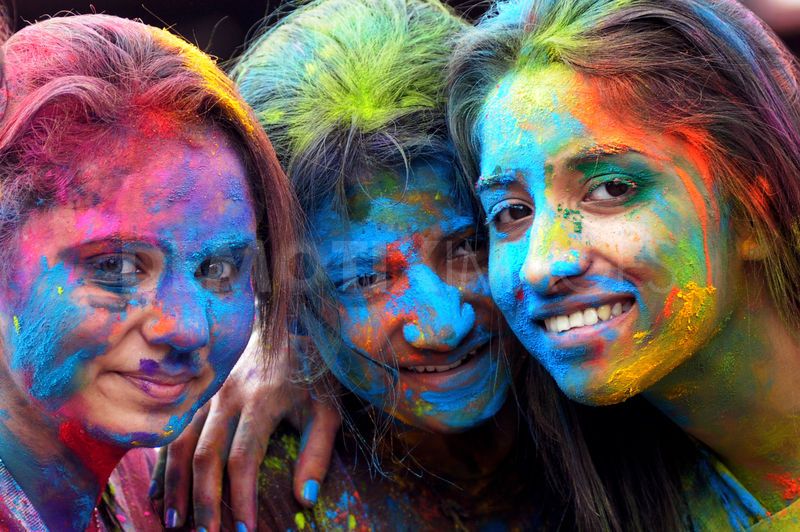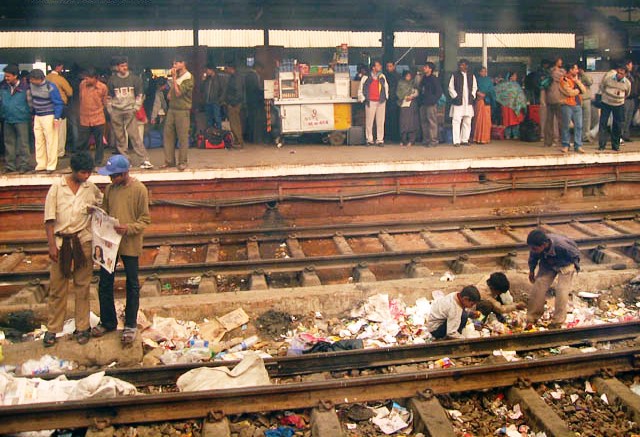An expert’s tips on making your own Holi colours, and skin and haircare advice before the festivities kick off tomorrow.
 by Dr Abha Kashyap
by Dr Abha Kashyap
Part II of III
There are several ways to protect your skin, hair and eyes from the onslaught of Holi colours. While it may not be possible to persuade others to play with natural colours, you can do your bit for the environment and towards human safety by playing Holi with safe, natural colours made of turmeric and flowers.
What’s more, you can make these colours at home, too. Try these:
– You can make gulaal at home by mixing red sandalwood powder with a bit of maida or plain atta.
– Also try boiling red sandalwood powder in water to make red-coloured water. This is both fragrant and medicinal.
– Mix turmeric and besan (gram flour) to get a bright yellow powder.
– Mix a paste of green leafy vegetables in water to make green-coloured water.
– Plain henna powder mixed in water will give you a vibrant orange colour.
– You can mix henna powder containing amla in water for a bright brown colour.
And before you start the revelries in earnest, bear in mind a few tips:
– Avoid all facial treatments during this period. If you are prone to allergies and rashes, visit your dermatologist to check whether you need precautionary medication.
– Harsh chemicals in the colours can cause itching and rashes, which lead to eczema upon scratching. Contact dermatitis, abrasion, irritation, itching, dryness, pruritus and burning sensation are the other problems you might encounter. The best way to protect your skin is to apply a thick layer of oil or petroleum jelly or a face cream on the exposed parts of the body an hour before you step out.
– Apply a lot of oil on your hair to protect it from harmful colours. This will also ensure that the residue from dyes in the colour does not get stuck to your hair and scalp. Make sure your hair isn’t dry before you go out to play, because colour will penetrate faster in the hair root and stain it. Oil hair religiously and give it a good massage.
– Wear clothes with long sleeves and full-length bottoms to protect your skin from direct colouration.
– You will need to soak your body in oil. From head to toe, drench yourself in coconut oil or any other easily available oil. Alternatively, you can also use heavy creams.
– Apply a thick layer of the greasiest sunscreen you can find. The oils in it will not let the colour seep deep into your skin, and the SPF in it will prevent you from the harsh rays of the sun.
– Coat your nails in transparent nail paint, so that colour wont stain your nails. Even men will love this tip.
– A thick layer of petroleum jelly must be applied on the lips. Also, opt for long-wearing lip tints to prevent staining.
– You might balk at the idea, but your teeth need protecting, too. Warm some Vaseline against your fingers and gently rub it against your teeth to prevent staining. It will prevent the staining.
– Always cover your eyes whenever there is a chance of colour coming in contact with them. Sunglasses are useful for this.
Other ignored areas of the body are the cuticles, back of the neck and ears. We often ignore these areas and end up having the most staining there! This time, coat the area with Vaseline or some heavy oil. And be safe.
Dr Abha Kashyap is an aesthetic image consultant, MedSpa.
Tomorrow: How to get rid of Holi colour from your skin and hair. Plus, protecting your eyes as you play Holi.
(Featured image courtesy idiva.com)







